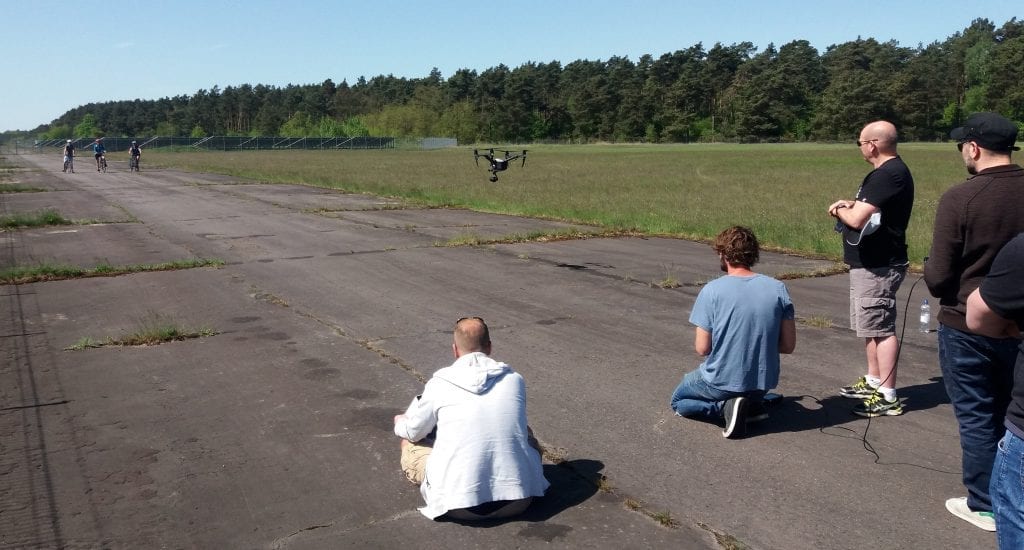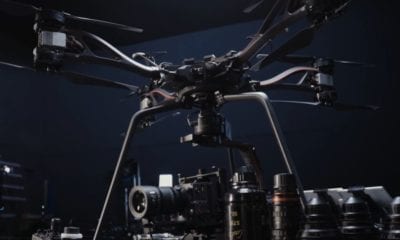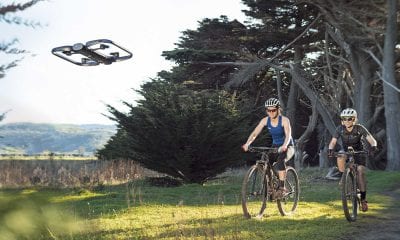
News
The Future of Media Production Using Multi-Drones
The Future of Media Production Using Multi-Drones
Have you ever seen a Hollywood movie production set? The cameras are moved on set manually, by videographers on the instructions of the directors using large cranes and robotic arms. Yes, that is literally how a moving camera works in a film studio. Why? Because a cameraman or a videographer can not move around all over a hall smoothly and definitely can not fly, inhibiting the possible dimensions for the camera. The same can not, however, be done while covering a concert or a political debate, a religious sermon or a protest; you can not set up cranes and giant robotic arms out there on the street and even if you could, they would be too comfortable to be around for the people and the equipment may be subject to serious damage.
How about using something that would achieve the same task, but without the hassle? What if we had something that could move a camera around in space freely without requiring costly investment and maintenance or careful technical instruction. We actually do have access to just the right thing: drones. Ever since Unmanned Aerial Vehicles (UAVs) or drones have been developed and researched, they have expanded their horizons to different commercial and industrial sectors. We are looking at UAVs being potentially utilized in traffic control, crowd control, medical applications, agriculture and equipment inspection. So while we are at it, we can also just use drones conveniently for movie production and media facilities.
Now to address these issues researchers have published a joint paper titled, ‘The Future Of Media The Future Of Media Production Through Multi-Drones’ Eyes’, as they explore the usage of UAVs for media production in their MULTIDRONE project. Its mission is to develop an innovative intelligent multi-drone team platform for media production to cover outdoor events (e.g., sports) that are typically distributed over large expanses, ranging, for example, from a stadium to an entire city.

The layout of the paper is as follows:
- First, the paper highlights editorial requirements for a smart media production making use of multi-drone audio-visual capture systems.
- Then, it describes the modular end-to-end platform, consisting of a flying multi-drone team and a ground station in which advanced algorithms for automated multi-vehicle path planning, crowd avoidance and computer vision are integrated.
- A special emphasis on apt and accurate modeling of the directorial conversation of the director with the drone systems.
- The innovative edge brought to the table by the usage of free multi-drone systems in terms of convenience of integration of visual effects as compared to isolate cameras.
To understand the effectiveness of application of multi-drone systems, the researchers used the systems on simulated video games and compared their performance to single cameras.
Using Unreal Engine 4, a famous game development engine used for a large number of games, a total of six scenarios were simulated as the drone systems recorded the environment of games; like cars racing in a desert for a racing game. Having gamers review the recordings of drones with conventional cameras, it was found that multi-drone systems returned optimal parameters consistently, which is a big success.

Figure 2 illustrates the MULTIDRONE system architecture, highlighting the main components and actors and the communications between them.
What does that mean and why is that a big deal? It means, that unlike simple cameras, drones were able to make sure that the recorded clip shown to gamers was consistently recorded to look at its best, just the way the director wants it to look, with almost no aberration. That is like playing a game in which every shot looks as if it was directed professionally rather than played depending on the player.

Examples of wireframe’s pages

Sample frames for the Cycle Follow and Car FlyBy scenarios


























